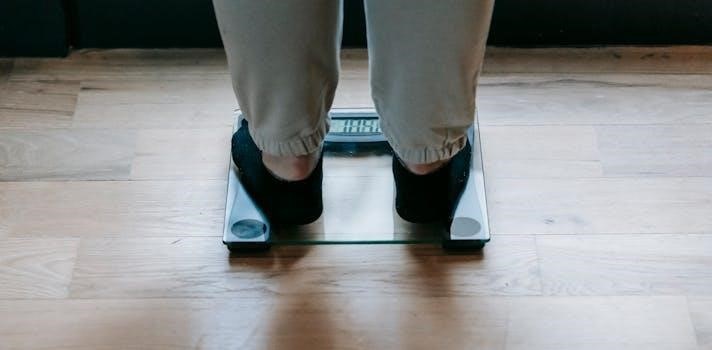Puma Women’s Shoe Size Chart Overview
The Puma women’s shoe size chart offers a comprehensive guide to ensure a proper fit. It includes various measurements, such as US, UK, and EU sizes, along with corresponding foot lengths in centimeters. This chart is a vital resource for online and in-store purchases.
Understanding Puma’s Sizing System
Puma employs a sizing system that, while generally consistent with other athletic brands, has its own nuances. The system primarily uses US, UK, and EU sizing conventions, which can sometimes cause confusion during online shopping or when switching between brands. These sizes are often paired with precise measurements in centimeters, allowing for a more accurate fit when measured correctly. Understanding that these measurements are not always a direct, linear conversion is essential. For example, a US size 7 might not always correspond perfectly to a UK size 5 or a specific EU size across all shoe models. It’s also important to know that Puma’s sizing may vary slightly based on the specific shoe design, which can influence the internal fit and feel. When utilizing the size chart, it is best to focus on the length in centimeters as the most dependable factor, rather than relying solely on US, UK, or EU conversions. This approach provides the highest chance of purchasing the correct shoe size. Puma’s size guides are intended to assist users in this process, offering clear and concise information.
US to UK to EU Size Conversion for Puma Women’s Shoes
Puma’s size chart provides a conversion between US, UK, and EU sizes, which is crucial for international shoppers. The conversion isn’t always linear due to differences in regional sizing standards. Generally, a US size is the starting point, with UK sizes typically being smaller and EU sizes being larger. For instance, a US women’s size 6 might translate to a UK size 4 and an EU size 37. However, these conversions aren’t fixed, and a half-size difference is often noted. This is why using the centimeter measurement as a reference point is recommended. While the size chart is a helpful tool, variations may occur across different Puma shoe models, making it imperative to double-check the specific shoe’s size guide if available. Many find they need to go up or down a half size from their usual shoe size, depending on the design and construction of the Puma shoe. When using a size conversion, consider the length of your foot in centimeters to ensure the most accurate fit. This approach helps mitigate inconsistencies from one size to another.

Detailed Puma Women’s Shoe Size Measurements
Understanding precise foot length measurements is key. Puma’s size charts include detailed centimeter measurements for each size. This ensures a more accurate fit than relying solely on standard US, UK, or EU conversions.
Length in Centimeters for Puma Women’s Sizes
Puma’s women’s shoe sizing system places significant emphasis on foot length, measured in centimeters, as the primary determinant of shoe size. This method provides a more precise fitting experience compared to relying solely on generic size conversions. The length in centimeters corresponds directly to the internal length of the shoe. For example, a Puma women’s size 4 corresponds to a foot length of approximately 20.5 cm, while a size 5 is around 21.5 cm. This direct correlation allows for greater accuracy when selecting your shoe size. When comparing sizes, note that a half-size difference usually represents about 0.5 cm in length. This detailed approach helps to minimize the inconsistencies that can arise from different sizing standards across brands. Puma’s commitment to centimeter-based measurements ensures that customers can choose their shoes with a more reliable fit. Always refer to the specific Puma size chart when making a purchase, as these measurements are the foundation for their sizing system.
Specific Puma Women’s Shoe Size Examples (e.g., US 4, 5, 7)
To illustrate how Puma’s women’s shoe sizes translate to foot measurements, let’s examine specific examples. A Puma women’s size US 4 typically corresponds to a foot length of about 20.5 centimeters. This size is equivalent to a UK size 1.5 and an EU size 34; Moving up, a US size 5 from Puma is usually designed for a foot that is approximately 21.5 centimeters long. This translates to a UK size 2.5 and an EU size 35. If you’re closer to a US size 7, Puma shoes in that size are generally suited for feet that measure around 23.5 centimeters. This equals to a UK size 5 and an EU size 37. These examples highlight the direct correlation between US sizing and foot length in centimeters that Puma uses. Remember, these are approximate values, and slight variations may occur depending on the specific shoe model. Always double-check the precise measurements provided on the official Puma size chart for the best fit. This level of detail ensures a comfortable and accurate purchase.

Puma Women’s Size Chart⁚ Comparison
Comparing Puma’s sizing to other athletic brands reveals a generally consistent approach. However, slight variations can occur. It’s important to note how Puma sizes compare to Adidas and other popular brands for the best fit.
Puma vs Other Athletic Brands Sizing Consistency
When considering Puma women’s shoe sizing, it’s essential to understand how it aligns with other athletic footwear brands. Generally, Puma’s sizing is consistent with many of its competitors in the market. However, minor discrepancies can sometimes occur due to variations in manufacturing and design. Our research indicates that Puma maintains a standard sizing scheme that is comparable to most of the 40 athletic brands we analyzed, making the process of finding your correct size much easier. While most brands try to adhere to industry standards, some brands may have unique fits or slight variations in their sizing charts. Therefore, it’s crucial to be aware of these nuances. For instance, while a size 7 in Puma might fit similarly to a size 7 in another brand, there could be minor differences in the actual length or width of the shoe. It is always recommended to consult the specific size chart provided by each brand and consider your individual foot shape and fit preferences.
Puma vs Adidas Women’s Shoe Sizing
Puma and Adidas, both giants in the athletic footwear industry, have their own sizing systems, and while they generally align, some distinctions exist. Although both brands provide size charts, variations can occur depending on the particular shoe model. It’s important to note that a size 7 in Puma might not fit exactly the same as a size 7 in Adidas. Factors like shoe design, materials, and intended use can influence the actual fit. Some models might run slightly longer or shorter, wider or narrower. The key is to always refer to the specific size charts provided by both brands when comparing sizes. Furthermore, because the sizing can vary depending on whether you are purchasing men’s or women’s sneakers, it’s especially important to pay close attention to the specific size chart for women’s footwear. By carefully comparing these charts you can make a more informed decision and choose the best fit for your feet.

Important Considerations for Puma Women’s Sizes
When selecting Puma women’s shoes, remember that shoe model impacts sizing. Some styles may fit differently than others. Always consult specific size charts and consider reading customer reviews for fit insights.
Impact of Shoe Model on Puma Sizing
The specific design and construction of different Puma shoe models can significantly influence how they fit, even within the same size designation. For instance, running shoes might feature a snugger fit to enhance performance, while casual sneakers might offer a more relaxed feel. Variations in materials, such as leather versus synthetic fabrics, can also affect the overall fit and flexibility of the shoe; Certain models may have a narrower or wider toe box, impacting comfort, especially for those with specific foot shapes. Additionally, shoes designed for specific activities, like training or walking, may have unique construction elements affecting the fit. Therefore, relying solely on your usual size without considering the shoe model could lead to incorrect sizing. It is crucial to refer to model-specific size guides, if available, and read customer reviews for insights on fit before making a purchase. Paying attention to details such as the shoe’s upper material, inner lining, and sole design will also help you anticipate how it will fit. Always consider the intended use of the shoe when assessing its size and fit.
Tips for Choosing the Correct Puma Women’s Size
Selecting the right Puma women’s shoe size involves more than just knowing your usual size. Start by accurately measuring your foot length, preferably in the evening when your feet are at their largest, and refer to the Puma size chart. Compare your measurement to the chart’s centimeter values, which offer a more precise guide than generic size numbers. If your measurement falls between two sizes, it’s generally recommended to choose the larger size, especially if you intend to wear thicker socks. Consider the specific shoe model you’re interested in, as fit can vary; check if it has a narrow, regular, or wide fit. Read customer reviews online to gather information on the model’s sizing tendencies; others may note if a particular style runs small or large. If possible, visit a store to try on different sizes and models. When trying on shoes, ensure you have enough room in the toe box. Walk around in the shoes to check for any discomfort or slippage. Keep in mind that fit is not only about length but also the width and how it feels overall.

Additional Puma Size Information
Beyond shoes, Puma offers size charts for clothing. These charts are essential for ensuring a proper fit when purchasing apparel. Explore Puma’s website for further guides and resources on sizing for various products.
Puma Clothing Size Chart Referral
While this guide primarily focuses on Puma women’s shoe sizes, it’s crucial to remember that Puma also provides detailed size charts for their clothing line. These charts are separate from the shoe charts and are designed to help customers find the best fit for apparel items such as t-shirts, hoodies, leggings, and jackets. The clothing size charts typically include measurements for bust, waist, and hips, ensuring that you select the correct size based on your body dimensions. It is important to consult the appropriate clothing size chart when purchasing Puma apparel, as sizes may differ from shoe sizes. Furthermore, the clothing fit can vary based on the specific style and design, so always refer to the provided size chart before making a purchase. Puma’s clothing size charts can usually be found on their official website or within product descriptions on various online retail platforms. These charts offer specific measurements in both inches and centimeters, and might include information on how to measure yourself for the best fit. Remember to pay attention to the specific chart for womenswear, as mens and kids clothing have their own charts.
Accessing Additional Puma Size Charts and Guides
Finding the right fit is crucial, and Puma offers multiple avenues to access their comprehensive size charts and guides. The primary source for these resources is the official Puma website, where you can typically find a dedicated size guide section. This section usually includes detailed charts for various product categories, including women’s shoes, clothing, and accessories. These charts are often presented in a user-friendly format, making it easy to compare your measurements with the provided sizes. Additionally, many online retailers that sell Puma products will also include size charts on their product pages. These may be the same charts as on the official site, or slightly modified. Another way to find sizing information is through customer reviews and forums, where other buyers might share their experiences with sizing. Furthermore, it can be helpful to check social media, especially dedicated Puma groups, where users may share fitting advice. It’s also worth noting that many physical Puma stores have trained staff who can assist with size selection. Always verify the source of your size chart and look for the most current version to ensure that you are using the latest sizing information.


